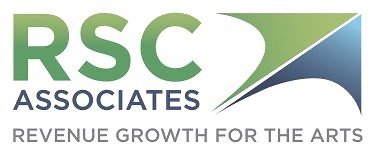A FUNDRAISING PROGRAM — IT’S LIKE FUNDRAISING, BUT WITH A MAP
With Bob Swaney
Let’s tackle a topic that trips up a lot of arts and cultural organizations—the difference between fundraising and a fundraising program.
Many organizations think they have a fundraising program when really, they’re just fundraising. And let me tell you, there’s a big difference! And if you want to build something sustainable, you need to know the difference.
Listen today for insights on the obvious differences and the deeper nuances. We’ll cover what makes a healthy fundraising program and how you can transition from simply fundraising to building something that lasts.
Read the full transcript below or click the button to listen.
FULL TRANSCRIPT OF THE PODCAST
Let’s tackle a topic that trips up a lot of arts and cultural organizations—the difference between fundraising and a fundraising program. Many organizations think they have a fundraising program when really, they’re just fundraising. And let me tell you, there’s a big difference! It’s the difference between sprinting and running a marathon, between a one-time transaction and a long-term relationship. And if you want to build something sustainable, you need to know the difference.
So, let’s break it down. First, let’s talk about the obvious differences. Then, we’ll dig deeper into the nuances. Finally, we’ll cover what makes a healthy fundraising program and how you can transition from simply fundraising to building something that lasts.
The Most Obvious Differences Between Fundraising and a Fundraising Program
If you’ve worked in the arts for any length of time, you know that fundraising is top-of-mind all the time. The Board asks, “Did we meet our fundraising goal?” The executive director says, “We need to fundraise for this project.” There are always lots of people asking about asking.
But here’s the kicker: Fundraising alone is not the same as having a fundraising program. Here are three of the more obvious differences:
1. Fundraising has a short life. You do it, you collect donations, and then it’s over. A fundraising program? That’s continuous. It builds on itself month after month, year after year.
2. Fundraising is an act, or an action. It’s something you do when you need money. But a fundraising program? It’s a way of life. It’s part of your organization’s culture and strategy, part of it’s DNA. It’s not just an action, it’s a culture.
3. Fundraising is often focused on a moment. Whether it’s a gala, a campaign, or a crisis appeal, fundraising is typically focused on a specific need or time frame. A fundraising program, on the other hand, is most successful when it’s donor-centric. It’s about relationships, not just revenue.
Five Key Differences: A Closer Look
1. Fundraising is short-term, while a fundraising program is continuous.
Once a fundraising event or campaign ends, the effort stops. A fundraising program ensures efforts are ongoing and build on previous success.
Fundraising often addresses immediate financial needs, while a program develops sustained giving and long-term donor relationships.
A program involves planned touchpoints, communications, and consistent donor engagement, rather than intermittent asks.
2. Fundraising is an act, while a fundraising program is a way of life.
Fundraising is something an organization does when there’s a financial shortfall, whereas a program is something an organization is—fundraising is built into its DNA.
A program integrates fundraising into the organization’s mission, rather than treating it as a separate or secondary function.
Staff and board members embrace fundraising as an ongoing responsibility, rather than a task that happens only when required.
3. Fundraising focuses on a moment or event, while a fundraising program focuses on donors and relationships.
Many organizations rely on single moments—like a gala or end-of-year appeal—to generate funds, without a plan to maintain engagement beyond those events.
A fundraising program is donor-centric, ensuring ongoing communication and appreciation rather than just asking for money when needed.
Instead of treating donors as one-time givers, a program nurtures relationships, leading to increased donor loyalty and larger gifts over time.
4. Fundraising is more transactional, while a fundraising program is more comprehensive.
Fundraising tends to be focused on immediate transactions, like event ticket sales or annual campaign gifts, while a program incorporates various giving opportunities.
A program includes strategies for major gifts, planned giving, corporate sponsorships, and grants, not just one-time asks.
Fundraising events may generate revenue, but without a program in place, those donors may not return for future giving opportunities.
5. Fundraising is one-dimensional, while a fundraising program is layered.
A program is built on multiple fundraising strategies: annual giving, major gifts, planned giving, and capital campaigns all working together.
It ensures consistency and financial stability by reducing reliance on any single revenue source.
The program adapts over time to fit changing donor behavior, economic conditions, and organizational needs.
Why a Fundraising Program is Preferable
You don’t have to start from scratch every year, and therefore momentum is easier to maintain.
Your donors feel like partners, not ATM machines.
You build credibility with funders and sponsors because your relationship with them moves far beyond ‘transactional.’
Your revenue streams diversify and become more resilient.
You can plan strategically, rather than always being in emergency “need” mode.
Five Characteristics of a Healthy Fundraising Program
Maybe your organization is in the gray area between frequent fundraising and having a full-fledged fundraising program. How do you know you’ve successfully crossed over? Here are a few clues:
1. Donor Retention is Strong. You’re keeping donors, not just acquiring them.
2. Diverse Revenue Streams. Annual fund, major gifts, planned giving—your eggs aren’t all in one basket.
3. Engaged Board and Leadership. Everyone understands and supports the fundraising program.
4. Relationship-Centered. It’s about long-term connections, not just quick asks.
5. Strategic and Data-Driven. Decisions are based on facts, not panic.
Five Steps to Transition from Fundraising to a Fundraising Program
Let’s assume your fundraising is still mostly in the transactional stage. Here are a few tips to help you progress forward:
1. Commit to a Year-Round Fundraising Strategy. Don’t just fundraise when you need money. Plan a full-year approach.
2. Develop a Donor Stewardship Plan. Engage donors beyond just asking for gifts. Thank them, update them, and build relationships.
3. Diversify Your Fundraising Efforts. If you’re relying only on events, expand to annual giving, major gifts, and planned giving.
4. Engage Your Board. Educate them on what a fundraising program looks like and their role in it.
5. Measure and Adjust. Track donor retention, revenue streams, and engagement. Use data to refine your approach.
If you remember just one thing, let it be this…
Fundraising is great, but a fundraising program is better. If you want your arts organization to thrive—not just survive—you need to develop a program that builds relationships, engages donors year-round, and creates fertile conditions for financial stability year after year.



